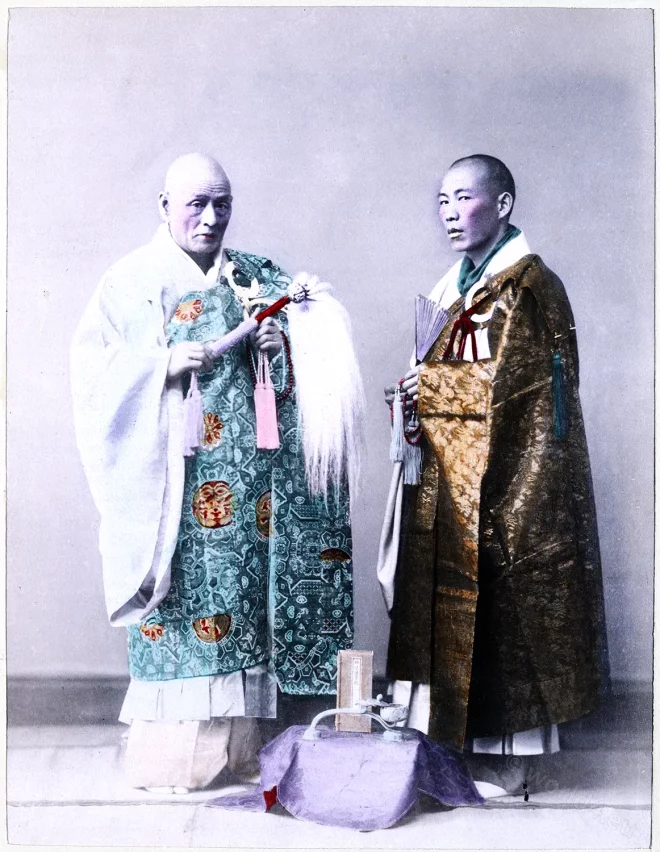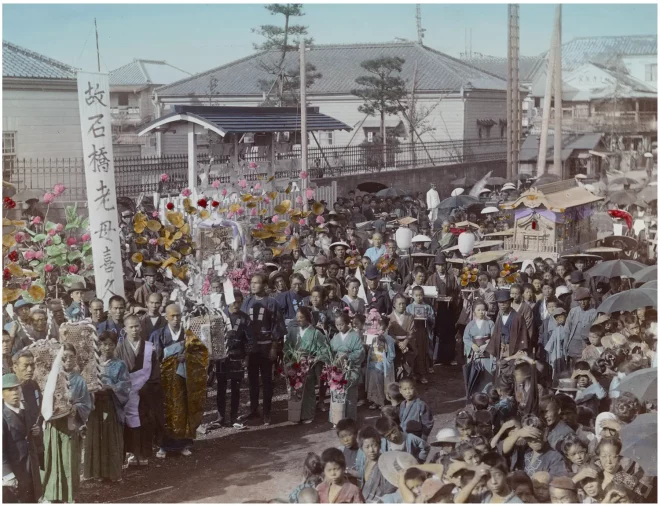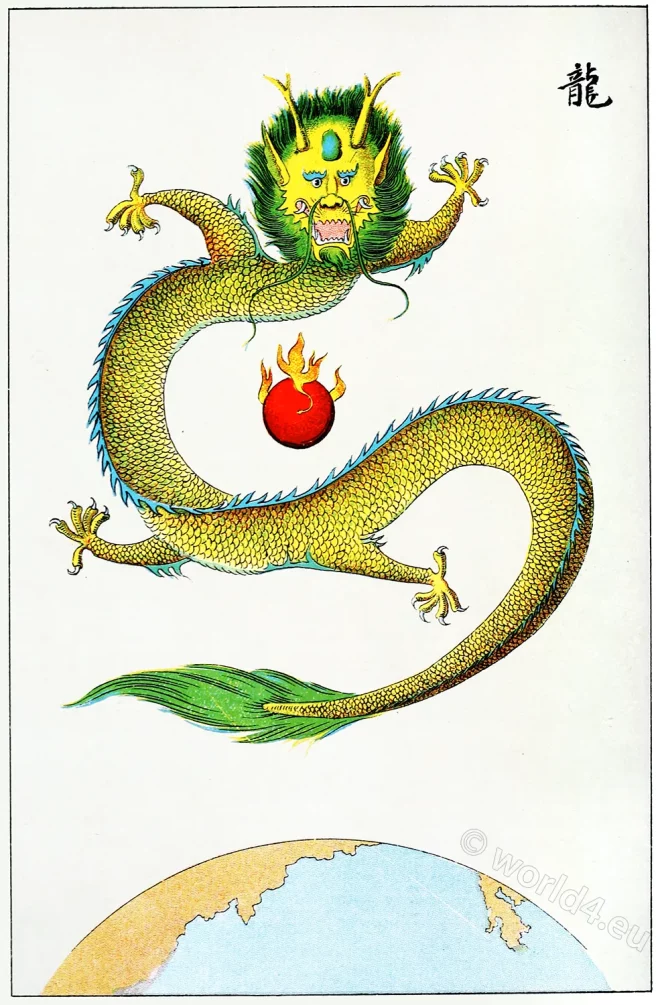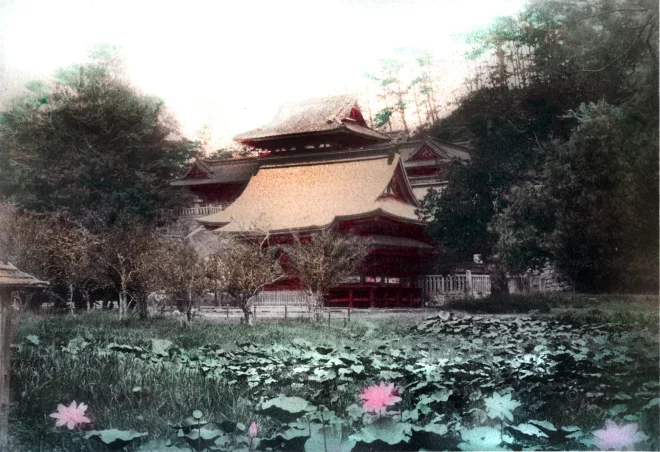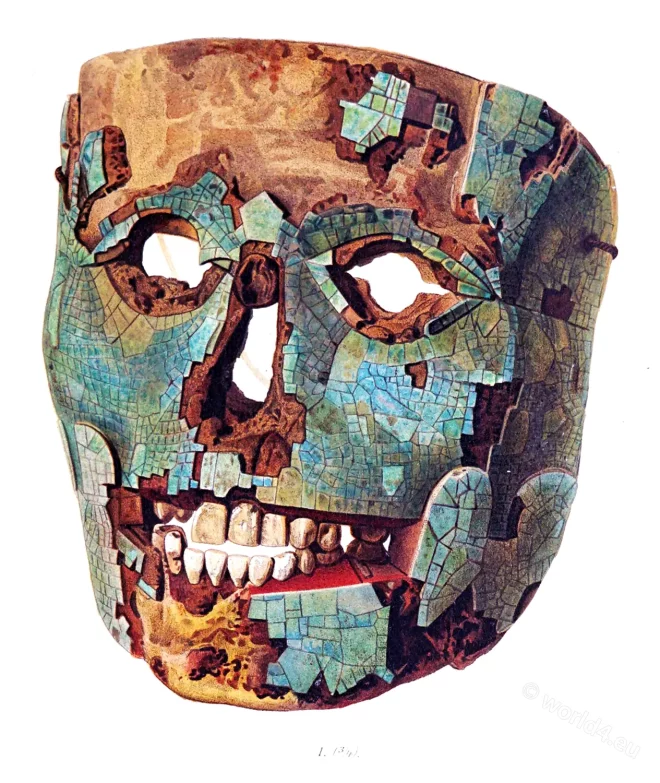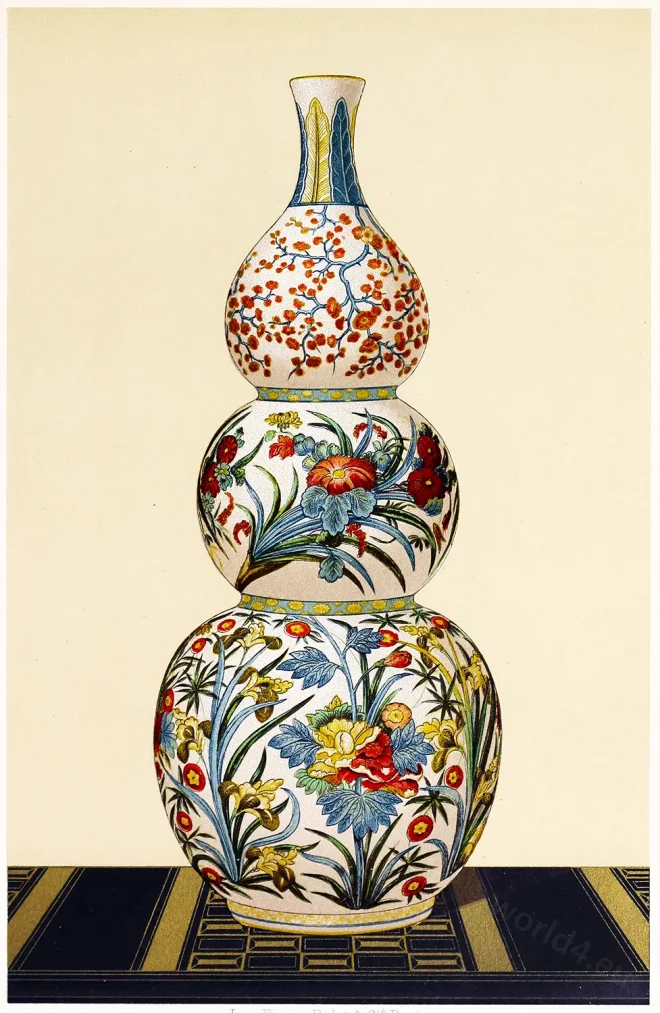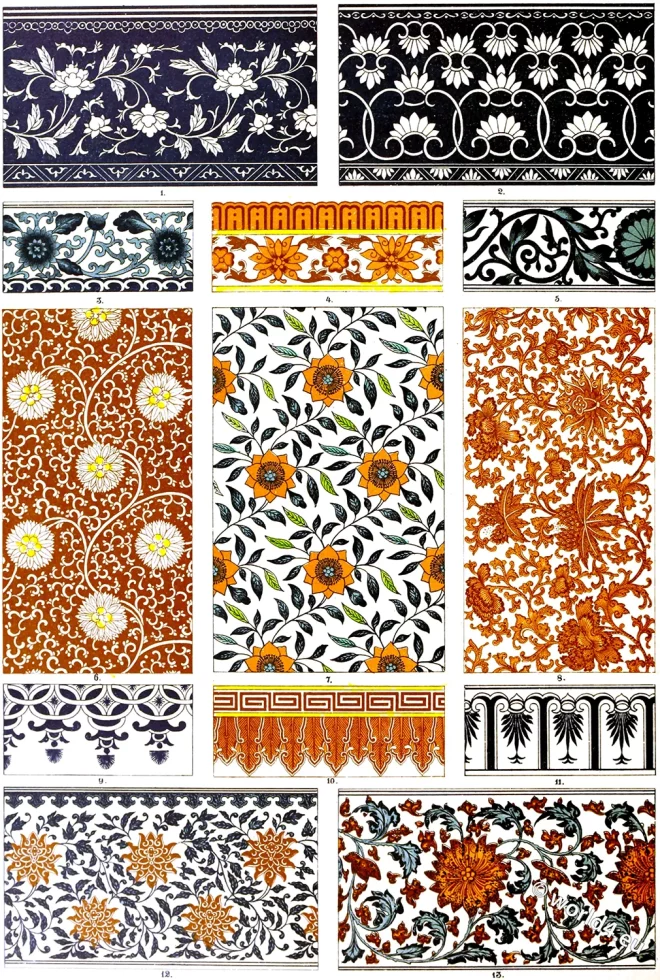Buddhism. The existence of a supreme God is ignored, and life is regarded as an evil.
Ginkakuji Garden in Kyoto, Japan.
The garden of the Silver Pavilion, known as the Ginkakuji Garden, is renowned for its beauty and tranquility.
Wistaria Blossoms at Kameido, Japan.
Josiah Conder describes the beloved Wistaria as the first popular summer flower celebrated in Japanese gardens.
Japanese funeral procession.
The Japanese show great respect for the dead, and the ceremonial both at the house and grave is very impressive.
Lung. Chinese Dragons. Appearances and classification.
Chinese dragon and its cultural significance, in mythology and folklore.
Japan. Lotus blossoms in Kamakura.
The lotus is associated with the religion of Buddha.
Skull mask covered with blue and red mosaic. Mexico.
Aztec skull mask covered with blue and red mosaic from Mexico.
Bottle of old Arita porcelain, Hizen. Imari ware, Japan.
Triple gourd-shaped bottle of Arita porcelain, Japan. In the Royal Keramic Collection, Dresden.
Ornamentation in Chinese porcelain painting.
Ornamental treasures. Chinese. Painting, by H. Dolmetsch.
India. The young lady’s toilet. Anglo indians.
The woman sitting on the ground is the Matranee; a Khidmutgar boy is bringing in a bottle of iced water.

